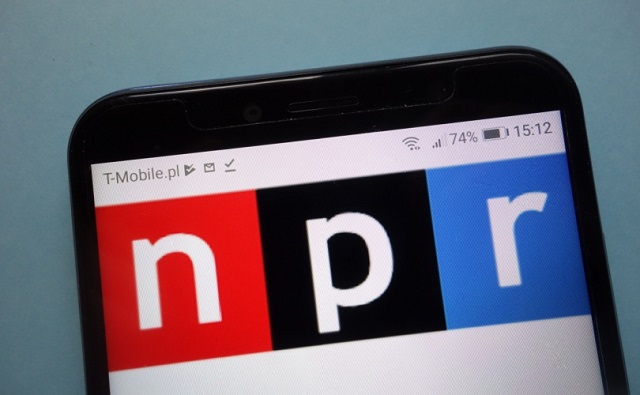Brownstone Institute
Cold War Nostalgia Explained
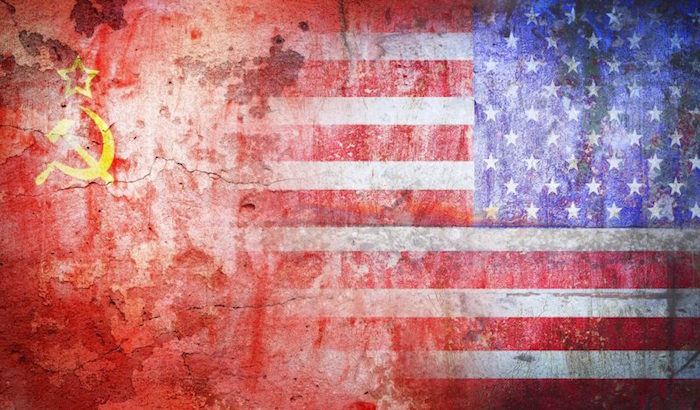
BY
The death of Mikhail Gorbachev this week unleashed a wave of nostalgia for simpler and better times. That’s odd, isn’t it?
Not so much. The freedom revolution that followed his reforms in the old Soviet Union did not turn out as planned. The world never became normal and peaceful as promised. And today, we can only look back on the 1980s with affection for better times.
Back in the day, in the midst of the Cold War, we had an overwhelming sense of the world being held hostage and on the verge of a global nuclear war that could wipe out humanity as we knew it. One wrong move, one bad piece of intelligence, one emotional outburst by a frustrated commander-in-chief, and boom, the world would go up in fire and smoke.
The stakes were so high! It was not just about stopping the end of life on the planet. It was about an epic struggle between freedom (the U.S.) and tyrannical communism (the Soviet Union). That’s what we were told in any case. In our political landscape, much of American politics turned on whether it was wise to risk peace alongside a Soviet victory or go for a full vanquishing of evil from the planet.
The battle over communism defined the lives of many generations. Everything seemed so clear in those days. This was really about systems and ideology: whether society would consist of individuals and communities making their own choices or whether an elite class of intellectuals would override individual plans with some centralized vision of utopia.
In those days, there was no question that we were the good guys and they were the bad guys. We had to spy, fight, build up the military, fund the freedom fighters, and generally be strong in the face of godless evil.
Ronald Reagan was just the champion that freedom needed in those days. He called the Soviet Union an “evil empire.” It drove the left nuts and cheered the base. He also attempted to shore up the American system: limited government (at least in some areas), lower taxes, sounder money, freer trade, and more rule of law rather than rule by administrative bureaucrats.
Then one odd day in 1987, late in Reagan’s second term, he and Gorbachev met and decided that they would together rid the world of nuclear weapons. They were giddy about the idea and the whole world went into shock and amazement, especially their respective advisors who rather liked the status quo. As a result, Gorbachev gained a victory at home – he ruled a poor and restless population sick of the nonsense – that encouraged him to seek more reforms, which only fed the appetite for more reform.
Reagan served his two terms and left office. Then dramatic change hit the world from 1989-90. The Soviet Empire fell apart, gradually at first and then all at once. Gorbachev became the country’s last leader as Soviet communism became plain-old Russian autocracy over time. The world could now be free! And the US could go back to normal.
About ten years later, I met Israeli historian Martin van Creveld. He was a scholar on war and terrorism. He held a unusual view. He believed that the end of the Cold War was a disaster and that the evidence was all around us. He said the world would never be as peaceful as it was when two superpowers faced off with nuclear arsenals. He described it as the perfect game for peace and prosperity. Neither would ever risk using the weapons but the prospect alone made states more cautious than they otherwise would be.
In fact, in his view, this nuclear standoff made the world as good as it could be given the circumstances. He admitted that he dreaded what might happen once one of the two powers disappeared. He believed that he was proven right: the world was headed toward chaos and disaster.
This was before 9-11 unleashed US imperial ambitions as never before. So even ten years later, I simply could not accept van Creveld’s position. That’s because I bought the line that the end of the Cold War was really about a victory for peace and freedom. Russia was free. And with the Soviet Union gone, the US could now safely return to its natural and constitutional status as a peaceful commercial republic, friendship with all and entangling alliances with none.
I was all in on the idea that we had finally reached the end of history: we would have freedom and democracy forever now that we knew that those systems were the best systems. And history would adapt to the evidence.
In those days, many on the left and right in American politics were screaming for normalcy. But there was a huge problem. The US had built up a massive intelligence/military/industrial machinery that had no intention of just closing up shop. It needed a new rationale. It needed a new enemy. It needed some new scary thing.
If the US could not find an enemy, it needed to make one.
China in those days wasn’t quite right for enemization, so the US looked to old allies that could be betrayed and demonized. Early in 1990, George H.W. Bush decided that Manuel Noriega was a bad money launderer and drug dealer and had to go. The US military made it happen.
Good show! What else? In the Middle East, Iraq was becoming annoying. So in 1990, Bush seized on a border dispute between Iraq and Kuwait, portraying the tiny country as a victim of the big oppressor next door. He would have to intervene militarily. The US won that one too.
Now, to be sure, this was not about the US going on some wild new imperial crusade. No no. It was really about punishing aggression just this one time so that the entire world would learn forevermore never to disturb borders again. It was a brief war for peace. It was two weeks to flatten the curve…wait, wrong war. It was two weeks to make the world safe for democracy.
Thus began what became a 25-year occupation. Also wrecked in the meantime were Libya and Syria. Just this week, the palace in Baghdad was ransacked yet again. This once civilized country that attracted the best and brightest students and artists from the whole region is in utter shambles. This is what the US did.
And that was just the start. The US, incredibly, replicated Soviet-style occupation in Afghanistan and ended up staying even longer. This was following the 9/11 attacks carried out as a retaliation against US actions in Iraq in the disputed borders in the Middle East. The Department of Homeland Security came into being and Americans lost vast freedoms though the vast expanse of the security state.
As for NATO itself, it never went away following the end of the Cold War but rather became another tool of provocation that the US could use to poke its enemies. It was too much for Russia, which decided to settle scores in Ukraine, thus provoking US and European sanctions that are driving the price of energy up for everyone but Russia.
All the while, China was on the rise with its new system of communism with Chinese characteristics, which really means a one-party state with no competition and complete control of industry and private life. China showed the world how to lock down to control a virus, and the US copied the idea, unleashing forms of despotism that the US as a whole had never known. Today we suffer the consequences of this fateful choice for control over freedom.
Looking back, the US victory in the Cold War was massively and tragically misspent. Instead of doing a victory lap for freedom and constitutional government — that’s what we believe was the whole damn point — the US used its monopoly on power to go on a global crusade. Whole peoples suffered but for decades we hardly felt it at all here at home. Life was good. The carnage abroad was all abstract.
The pandemic did for state power what not even the Cold War or the War on Terror could accomplish: terrified the population into a level of compliance that meant giving up even the right to educate, buy and sell, associate, worship, and even speak. Not even private homes were safe from the virus police. Not even weddings, funerals, and visits to the hospital were untouched. The Bill of Rights became a dead letter nearly overnight.
With lockdowns and the current political and economic chaos, the global empire has come home to oppress us all in the most personal possible way. We now read tales of life in the Soviet Union and we recognize it all too well. We read 1984 by George Orwell and recognize it in our own experience. This is not what winning the Cold War was supposed to mean.
From 1948 through 1989, the US and Russia were locked in a nuclear standoff. Children were trained to duck and cover should a nuclear bomb go off. People built shelters in their backyards. The enemy was always over there. It was a fight for freedom of tyranny. And yet today, we can only look back with nostalgia for a simpler time.
I’m not nostalgic for the Cold War and I would never want it back. Its end gave rise to a new hope, albeit one that came to be dashed over time.
I am nostalgic for a normal life with a primacy put on freedom, rights, and thriving. A transnational ruling class in government, media, medicine, and technology seem determined to forestall that world from ever coming about again. So yes, I long for the days of a smiling Reagan and Gorby! Together they decided to end the mutually assured destruction of the Cold War. We had no idea just how good we had it.
Brownstone Institute
Deborah Birx Gets Her Close-Up
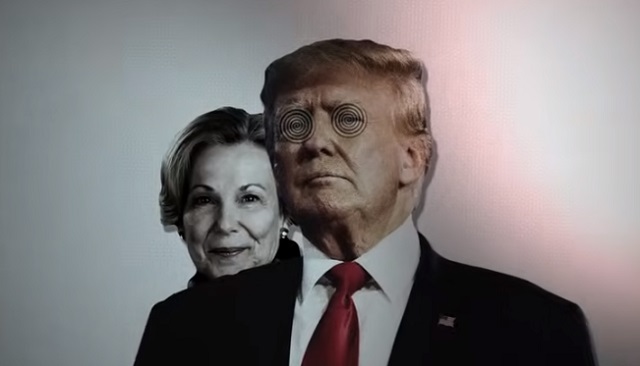
From the Brownstone Institute
BY
According to Birx, she intentionally buried the more draconian elements of the lockdowns in text at the end of long documents, theorizing (correctly apparently) that most reporters or readers would just “skim” the document and would not focus on how extreme and unprecedented these mandates actually were.
Most Americans will remember Dr. Deborah Birx as the “scarf lady” who served on the White House’s Covid Response Team beginning in February 2020.
According to a recently-released (but little-seen) 24-minute mini-documentary, it was Birx – even more so than Anthony Fauci – who was responsible for government “guidelines,” almost all of which proved to be unnecessary and disastrous for the country.
According to the documentary, the guidelines ran counter to President Trump’s initial comments on Covid, but ultimately “toppled the White House (and Trump) without a shot being fired.”
The mini-documentary (“It Wasn’t Fauci: How the Deep State Really Played Trump”) was produced by Good Kid Productions. Not surprisingly, the scathing 24-minute video has received relatively few views on YouTube (only 46,500 since it was published 40 days ago on Feb. 26).
I learned of the documentary from a colleague at Brownstone Institute, who added his opinion that “Birx (is) far more culpable than Fauci in the Covid disaster…Well worth the time to see the damage an utter non-scientist, CIA-connected, bureaucrat can do to make sure things are maximally bad.”
I agree; the significant role played by Birx in the catastrophic national response to Covid has not received nearly enough attention.
Brought in from out of Nowhere…
From the video presentation, viewers learn that Birx was added to the White House’s Coronavirus Task Force as its coordinator in latter February 2020.
Birx worked closely with Task Force chairman Vice President Mike Pence, a man one suspects will not be treated well by future historians.
According to the documentary, “career bureaucrats” like Birx somehow seized control of the executive branch of government and were able to issue orders to mayors and governors which effectively “shut down the country.”
These bureaucrats were often incompetent in their prior jobs as was Birx, who’d previously served as a scientist (ha!) in the Army before leading the government’s effort to “fight AIDS in Africa” (via the PEPFAR Program).
When Birx was installed as coordinator of Covid Response she simply rehashed her own playbook for fighting AIDS in Africa, say the filmmakers.
The three tenets of this response were:
- “Treat every case of this virus as a killer.”
- “Focus on children,” who, the public was told, were being infected and hospitalized in large numbers and were a main conduit for spreading the virus.
- “Get to zero cases as soon as possible.” (The “Zero Covid” goal).
The documentary primarily uses quotes from Scott Atlas, the White House Task Force’s one skeptic, to show that all three tenets were false.
Argued Atlas: Covid was not a killer – or a genuine mortality risk – to “99.95 percent” of the population. Children had virtually zero risk of death or hospitalization from Covid. And there was no way to get to “zero cases.”
Atlas Didn’t Shrug, but was Ignored…
Furthermore, the documentary convincingly illustrates how the views of Atlas were ignored and how, at some point, his ability to speak to the press was curtailed or eliminated.
For example, when Atlas organized a meeting for President Trump with Covid-response skeptics (including the authors of the Great Barrington Declaration) this meeting was schedule to last only five minutes.
The documentary also presents a report from the inspector general of the Department of State that was highly critical of Birx’s management style with the African “AIDS relief” program she headed.
Among other claims, the report said she was “dictatorial” in her dealings with subordinates and often “issued threats” to those who disagreed with her approach.
Shockingly, this highly-critical report was published just a month before she was appointed medical coordinator of the Coronavirus Task Force.
A particularly distressing sound bite from Birx lets viewers hear her opinion on how controversial “guidance” might be implemented with little pushback.
According to Birx, she intentionally buried the more draconian elements of the lockdowns in text at the end of long documents, theorizing (correctly apparently) that most reporters or readers would just “skim” the document and would not focus on how extreme and unprecedented these mandates actually were.
The documentary points out that Birx’s prescriptions and those of President Trump were often in complete conflict.
Birx, according to the documentary, once pointed this out to Vice President Pence, who told her to keep doing what she believed.
Indeed, the Vice President gave Birx full use of Air Force 2 so she could more easily travel across the country, spreading her lockdown message to governors, mayors, and other influencers.
Several Covid skeptic writers, including Jeffrey Tucker of Brownstone Institute, have noted that President Trump himself went from an opponent of draconian lockdowns to an avid supporter of these responses in a period of just one or two days (the pivotal change happened on or around March 10th, 2020, according to Tucker).
Whoever or whatever caused this change in position, it does not seem to be a coincidence that this about-face happened shortly after Birx – a former military officer – was named to an important position on the Task Force.
(Personally, I don’t give Anthony Fauci a pass as I’ve always figured he’s a “dark master” at manipulating members of the science/medical/government complex to achieve his own desired results.)
This documentary highlights the crucial role played by Deborah Birx and, more generally, how unknown bureaucrats can make decisions that turn the world upside-down.
That is, most Americans probably think presidents are in charge, but, often, they’re really not. These real rulers of society, one suspects, would include members of the so-called Deep State, who have no doubt installed sycophants like Fauci and Birx in positions of power.
I definitely recommend this 24-minute video.
A Sample of Reader Comments…
I also enjoyed the Reader Comments that followed this video. The first comment is from my Brownstone colleague who brought this documentary to my attention:
“… As I said, things can change over the period of 20 years but in the case of Birx/Fauci, I do not believe so. I have never seen people entrenched in the bureaucracy change.”
Other comments from the people who have viewed the mini-documentary on YouTube:
“Pence needs to be held accountable.”
“What does Debbie’s bank account look like?”
“(The) final assessment of President Trump at the 23:30 mark is, while painful, accurate. He got rolled.”
“This is very hard to find on YouTube. You can literally search the title and it doesn’t come up.”
“Excellent summary, hope this goes viral. Lots of lessons to learn for future generations.”
“Eye opening. Great reporting.”
Post from One Month Ago…
“37 likes after 3 years of the most controversial and divisive action in recent history. How can this be?”
“Oh never mind. YouTube hid it from the public for years.”
“Probably hasn’t been taken down yet for that reason, relatively low views.”
“Thanks for this! Sounds like everyone below President Trump was on a power trip and I didn’t think it was possible to despise Pence more than I already do.”
“…the backing of CDC, legacy media, WHO and government schools, business folding in fear are ALL responsible. Accountability for every person and agency is paramount!”
“Should be noted that her work on AIDS in Africa was just as useless and damaging.”
“First, any mature, adult woman who speaks with that much vocal fry should be immediately suspect. And the glee with which she recounts her role at undermining POTUS is remarkable and repulsive. This woman should NEVER be allowed to operate the levers of power again.”
Republished from the author’s Substack
Brownstone Institute
Justices’ Grave Error in Murthy v. Missouri

From the Brownstone Institute
BY
Along with my co-plaintiffs, I was at the Supreme Court last week for oral arguments in our Murthy v. Missouri case, in which we are challenging the federal government’s alleged censorship on social media. The Supreme Court will likely rule in June whether to uphold, modify, or strike down the Fifth Circuit Court of Appeals’ injunction against five federal agencies, in what, the district court judge wrote, “arguably involves the most massive attack against free speech in United States’ history.”
At the hearing, Justice Samuel Alito pointed out that emails between the White House and Facebook “showed constant pestering of Facebook.” He went on to comment, “I cannot imagine federal officials taking this approach to the print media…It’s treating these platforms like subordinates.” He then asked the government’s attorney, “Would you treat the New York Times or the Wall Street Journal this way? Do you think the print media considers themselves ‘partners’ with government? I can’t imagine the federal government doing that to them.”
The government’s attorney had to admit, “The anger is unusual” — referring to White House official Rob Flaherty literally cursing at a Facebook executive and berating him for not taking action quickly enough to comply with the government’s censorship demands.
Justice Brett Kavanaugh followed up, asking, “On the anger point, do you think federal government officials regularly call up journalists and berate them?” It’s worth recalling that Kavanaugh worked as a White House attorney before he was appointed to the court, as did Justices John Roberts and Elena Kagan. No doubt there were times they dialed a journalist or editor to try to convince them to change a story, clarify a factual assertion, or even hold or quash the publication of a piece. Kavanaugh admitted, “It’s not unusual for the government to claim national security or wartime necessity to suppress a story.”
Perhaps colorful language is sometimes used in these conversations, as Kavanaugh himself hinted. Kagan concurred: “Like Justice Kavanaugh, I have had some experience encouraging the press to suppress its own speech…This happens literally thousands of times a day in the federal government.” With a wink to the other former executive branch attorneys on the bench, Roberts quipped, “I have no experience coercing anyone,” which generated a rare chuckle from the bench and audience.
This analogy to government interactions with print media, however, does not hold in the case of the government’s relationship with social media. There are several crucial differences that profoundly change the power dynamic of those interactions in ways directly relevant to our case. These differences facilitate, in Alito’s words, the government treating the platforms like subordinates in ways that would be impossible with print media.
Behind the Scenes
First, when a government official contacts a newspaper, he is talking directly to the journalist or editor — the person whose speech he is trying to alter or curtail. The writer or editor has the freedom to say, “I see your point, so I’ll hold my story for one week to allow the CIA time to get their spies out of Afghanistan.” But the speaker also has the freedom to say, “Nice try, but I’m not persuaded I got the facts wrong on this, so I’m running the story.” The publisher here has the power, and there is little the government can do to threaten that power.
By contrast, with requests or demands for social media censorship, the government was never talking with the person whose speech was censored, but with a third party operating entirely behind the scenes. As my co-plaintiff, the eminent epidemiologist Dr. Martin Kulldorff, quipped, “I would have been happy to get a call from a government official and hear about why I should take down a post or change my views on the scientific evidence.”
Power Dynamic
Additionally, there is little the government can do to destroy the business model and cripple the New York Times or Wall Street Journal, and the journalists and editors know this. If the government pushes too hard, it will also be front page news the next day: “Government Trying to Bully The Post to Censor Our Breaking Story,” with the lede, “Naturally, we told them to go pound sand.”
But the power dynamic is entirely different with Facebook, Google, and X (formerly Twitter): The government does have a sword of Damocles to hang over the head of noncompliant social media companies if they refuse to censor — in fact, several swords, including the threat to remove Section 230 liability protections, which Facebook founder Mark Zuckerberg has accurately called an “existential threat” to their business, or threats to break up their monopolies. As the record in our lawsuit shows, the government explicitly made just such threats, even publicly on several occasions, in direct connection to their censorship demands.
Furthermore, unlike the major tech companies, newspapers or magazines do not have massive government contracts that might disappear if they refuse to comply. When the FBI or Department of Homeland Security calls Facebook or X with censorship demands, the corporate executives know that a weaponized agency has the power to launch frivolous but onerous investigations at any time. It thus becomes virtually impossible for social media companies to tell the government to take a hike — indeed, they may have a fiduciary duty to shareholders not to incur serious risks by resisting government pressure.
The text of the First Amendment doesn’t say the government shall not “prevent” or “forbid” free speech; it says the government shall not “abridge” free speech — i.e., shall not do anything to lesson a citizen’s ability to speak or diminish one’s potential reach. A sensible and clear injunction would simply state, “Government shall not request that social media companies remove or suppress legal speech.”
But if the justices want to distinguish between persuasion and coercion in the injunction, they need to appreciate that social media companies operate in a very different relationship with government than traditional print media. These asymmetrical power dynamics create a relationship ripe for unconstitutional government coercion.
Republished from The Federalist
-
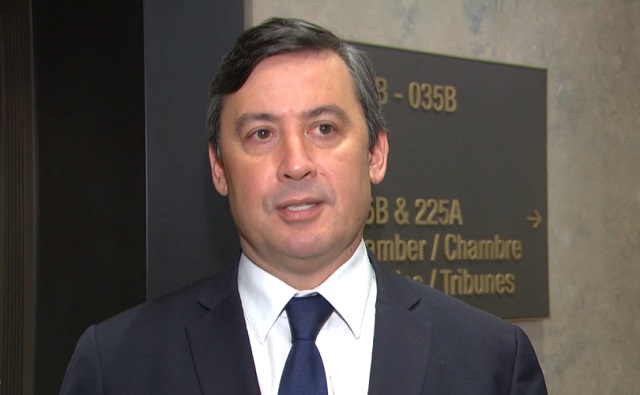
 espionage17 hours ago
espionage17 hours agoConservative MP testifies that foreign agents could effectively elect Canada’s prime minister, premiers
-

 Alberta23 hours ago
Alberta23 hours agoBuilding a 21st century transit system for Calgary
-
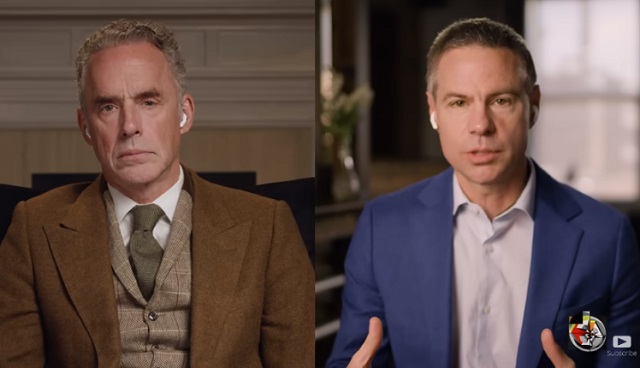
 Health23 hours ago
Health23 hours agoSetback for the Transgender movement: Michael Shellenberger on leaked files revealing medical malpractice on children and vulnerable adults
-

 Education22 hours ago
Education22 hours agoSolar eclipse school closures underscore impact of learning loss
-

 Health17 hours ago
Health17 hours agoQuadriplegic man dies via euthanasia after developing bed sores waiting at Quebec hospital
-

 COVID-192 days ago
COVID-192 days agoJapanese study shows disturbing increase in cancer related deaths during the Covid pandemic
-

 Health9 hours ago
Health9 hours ago‘Shocking cover-up’: DOJ lawyers committed fraud in vaccine injury case, CHD attorney alleges in motion
-

 Health17 hours ago
Health17 hours agoTime for an intervention – an urgent call to end “gender-affirming” treatments for children







